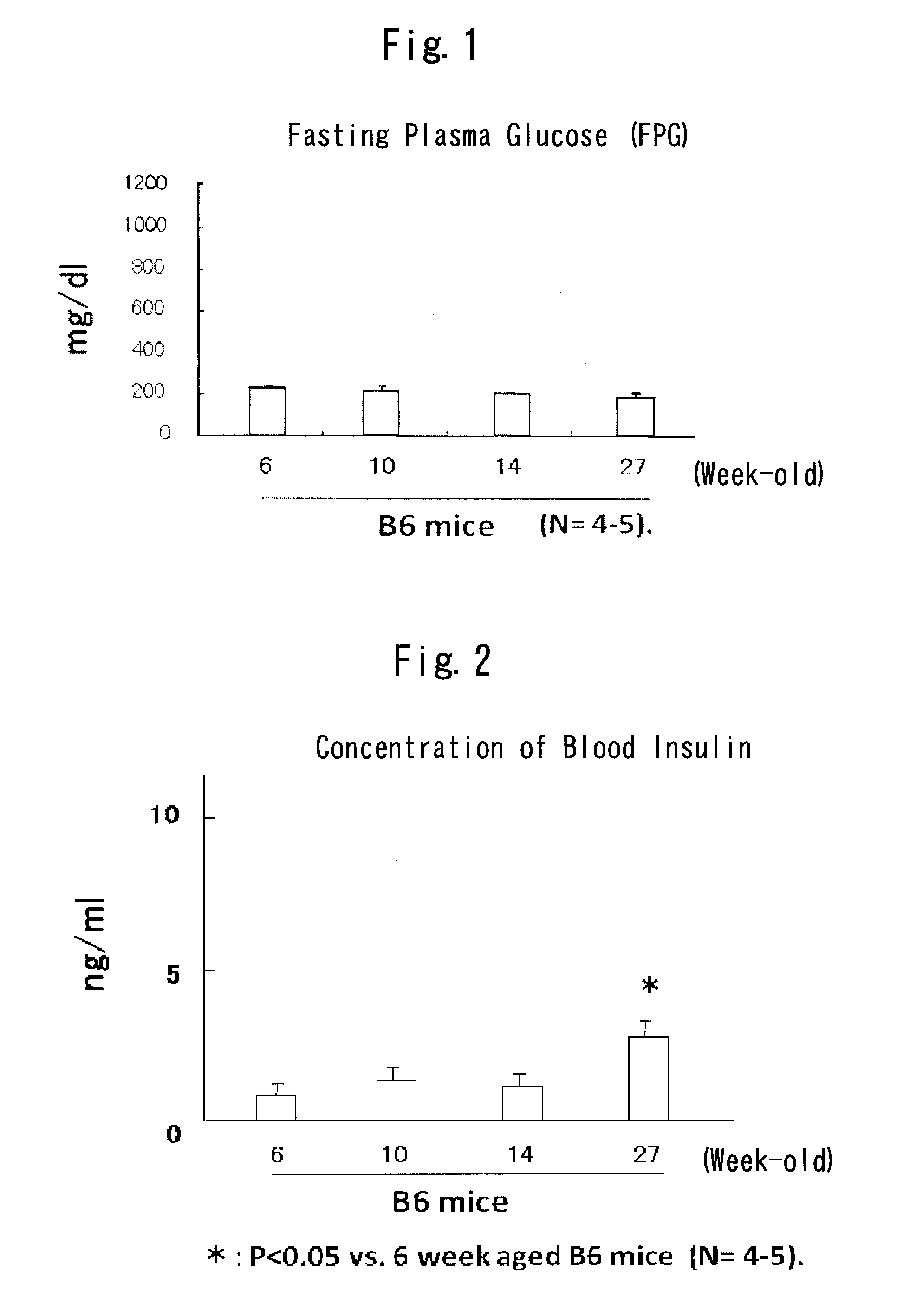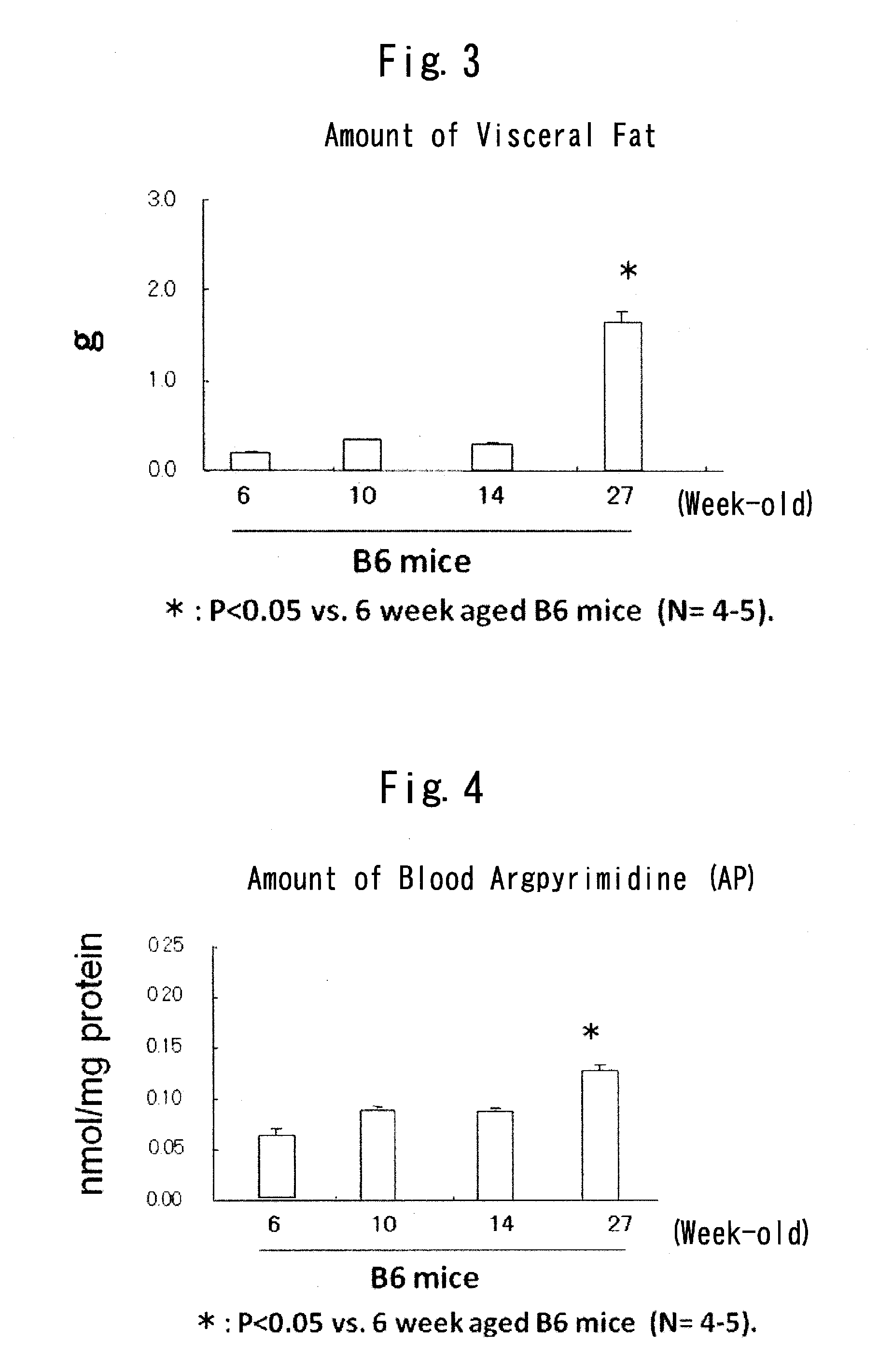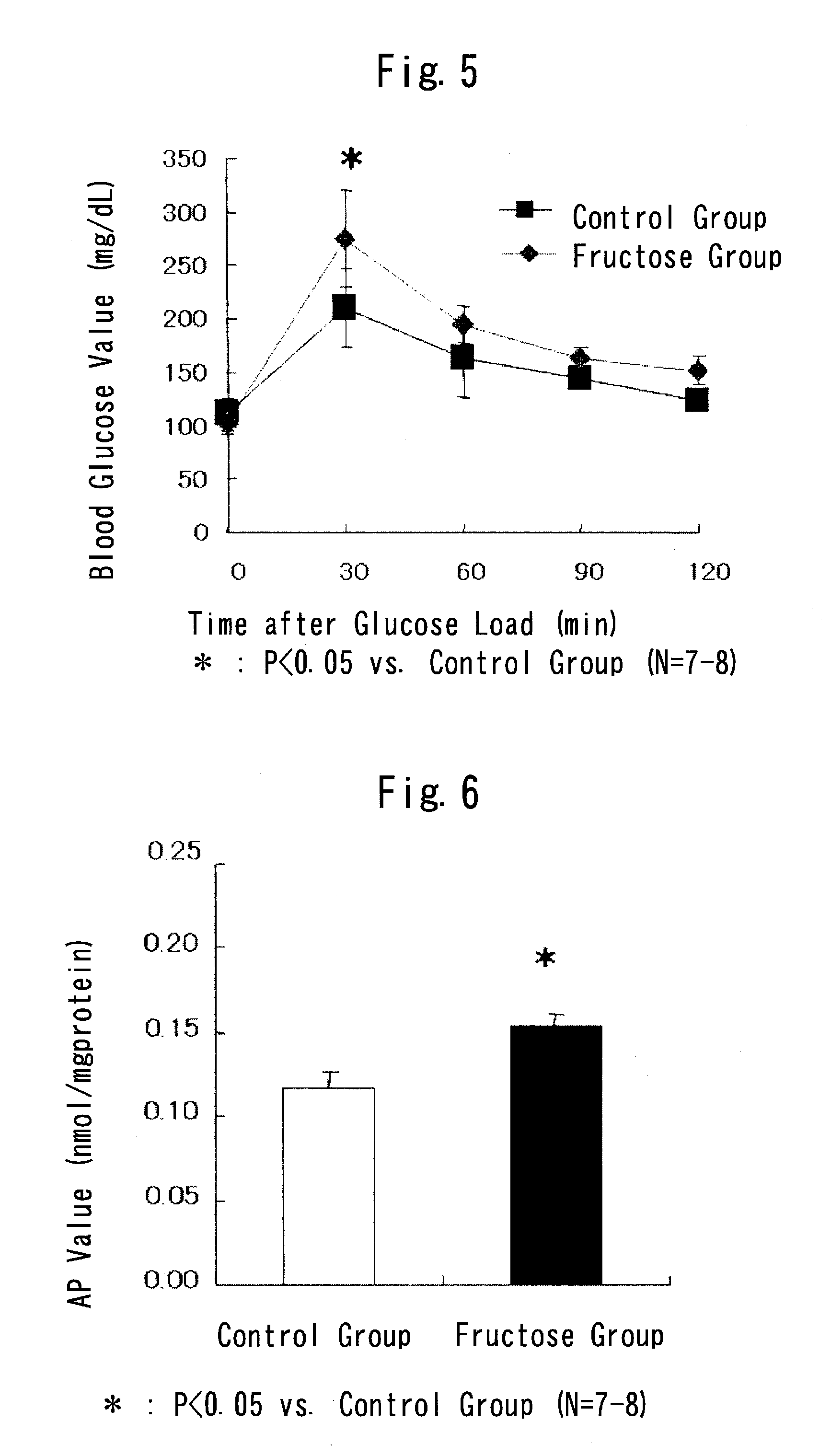Method for the detection of prediabetes
a prediabetes and detection method technology, applied in the field of prediabetes detection, can solve the problems of increasing terribly, imposing a great burden, and high blood glucose level, and achieve the effect of rapid and precise diagnosis, effective, and rapid
- Summary
- Abstract
- Description
- Claims
- Application Information
AI Technical Summary
Benefits of technology
Problems solved by technology
Method used
Image
Examples
example 1
[0114]This example describes a process for forming a prediabetic mouse. Five-week-old C57BL / 6J mice (hereinafter referred to as “B6 mice”) were purchased from Charles River Laboratories Japan Inc. The mice were housed in a breeding room after receipt and bred under a light and darkness cycle for every 12 hours in the environment in which to eat solid feed (Oriental Yeast Co., Ltd.) and drink tap water any time until they became intended week old. They were then used for experiments.
example 2
[0115]The mouse was anesthetized by intraperitoneally administering a Nembutal injection at a dose of 1 ml per kg of weight, and blood was taken from the heart with a heparin-treated injector after weighing the body weight. The blood collected was centrifuged at 4° C. and 1,000×g for 10 minutes yielding a blood plasma sample. After visceral fat was collected, the mouse was sacrificed. The visceral fat was weighed (see FIG. 3).
example 3
[0116]The blood glucose level was measured using the Glutest sensor (Sanwa Kagaku Kenkyusho Co., Ltd.). The blood insulin value was measured using a super-high mouse insulin assay kit (Morinaga Institute of Biological Science, Inc.). The blood glucose and blood insulin values are shown in FIG. 1 and FIG. 2, respectively.
PUM
| Property | Measurement | Unit |
|---|---|---|
| resistance | aaaaa | aaaaa |
| insulin resistance | aaaaa | aaaaa |
| concentration | aaaaa | aaaaa |
Abstract
Description
Claims
Application Information
 Login to View More
Login to View More - R&D
- Intellectual Property
- Life Sciences
- Materials
- Tech Scout
- Unparalleled Data Quality
- Higher Quality Content
- 60% Fewer Hallucinations
Browse by: Latest US Patents, China's latest patents, Technical Efficacy Thesaurus, Application Domain, Technology Topic, Popular Technical Reports.
© 2025 PatSnap. All rights reserved.Legal|Privacy policy|Modern Slavery Act Transparency Statement|Sitemap|About US| Contact US: help@patsnap.com



